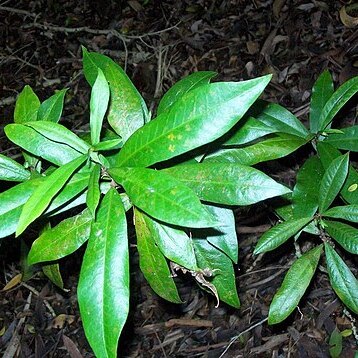A shrub up to 2 m high. The roots are fleshy. The leaves are simple and 8-24 cm long and 2.5-4.5 cm wide. The leaf stalk is swollen at the base. The leaves taper to the tip. The stems zigzag from leaf to leaf. The flowers are yellow and 2.5 cm long. They occur singly in the axils of the upper leaves. The stamens are leaf like and yellow and orange. The fruit are up to 30 mm across. They hang singly at the tips of the twigs. There are several seeds inside. They are 4 mm long. The fruit is edible in small quantities.

